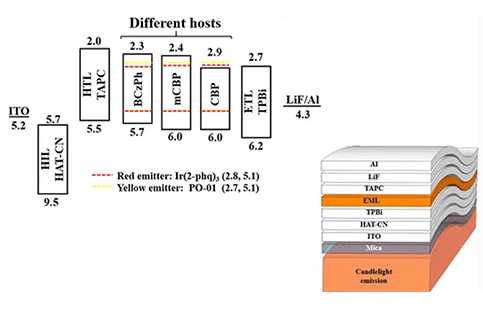





2022-11-02
In a recent paper published in ACS Applied Electronic Materials, researchers have created a flexible organic LED that emits candle-like light for more comfortable use at night. Project researcher Jwo-Huei Jou and other researchers have developed organic LEDs that emit a warm white light similar to that produced by candles. However, these devices still emit some blue wavelengths, which can interfere with sleep because it reduces the body's production of melatonin.
These devices are made of rigid materials and are not flexible. One option to make them flexible is to use a plastic substrate, as other organic LEDs do. But plastic doesn't withstand repeated flexing very well.
Another option is mica - a natural mineral with extreme temperature tolerance that can be split into flexible transparent sheets. So Jou, Ying-Hao Chu and colleagues wanted to develop a better organic LED and apply it to a mica backplane, creating a bendable candle-like light with a long lifespan.

Scientists invent flexible organic LEDs with less blue wavelengths than candlelight
The researchers deposited a transparent film of indium tin oxide on a transparent mica sheet as the LED's anode, which can be bent 50,000 times without breaking. Next, the team mixed the light-emitting substance N,N'-dicarbazole-1,1'-biphenyl with red and yellow phosphorescent dyes to create a light-emitting layer. The layer is then placed between a conductive solution with an anode on one side and an aluminum layer on the other, creating a flexible organic LED.
When a constant electrical current was applied to the device, it produced bright, warm light that emitted even less blue wavelengths than natural candlelight. Calculations showed that exposure to LEDs for 1.5 hours would suppress a person's melatonin secretion by about 1.6%, while light from a cool-white compact fluorescent lamp would suppress melatonin secretion by 29%. The researchers say the flexibility of their candle-like organic LEDs opens up opportunities for the design of blue-light-free nighttime devices. (Source: cnBeta/LEDinside)